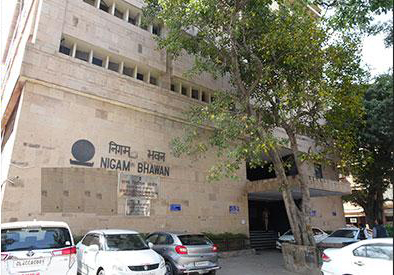NEW DELH: The new delimitation order has added a sign of worry among the Aam Aadmi Party members as the party insiders believe that the state election commission (SEC) will not take the objections against the delimitation order seriously. The party observers have stated that the draft delimitation order, approved by the Home Ministry, will affect the vote share.
“We have been asked to file our objections by 3 October and the commission will submit the final report to the Home Ministry by 5 October. How can the commission review the objections within a day? I believe that the SEC is not taking up our issue seriously,” the AAP observer, on the condition of anonymity, told The Sunday Guardian.
Similarly, another AAP member, told this paper, “We have several objections with the nature of delimitation. We have seen that several wards are more than 3-4 km away from the residents; in such a scenario, most of them may not go to vote and this will affect the vote share.”
The copy of the objection letter, received by The Sunday Guardian, states, “The Delimitation Committee was formed with a single mandate of reducing the number of wards in Delhi from 272 to 250. Your Committee was required to reduce 22 wards and the only logical way to do this was to identify those Assembly constituencies which had 4-7 wards and to reduce 1 ward from each of them by evenly distributing its population among the remaining wards of that Assembly Constituency. It means that if an Assembly constituency had originally 6 wards, you had to reduce it to 5 and if an Assembly constituency had 4 wards, there should be 3 wards after delimitation. They were not required to disturb any other Assembly constituency except for these 22 Assembly Constituencies where one ward each was being dissolved in other remaining wards of that AC.”
“But if you have disturbed most of the wards in most assembly constituencies without changing the number of wards in Assembly Constituencies, this process is clearly politically motivated. There were several constituencies where the number of wards was neither increased nor reduced, but certain areas have been moved from one ward into another ward. The Delimitation Committee has to tell the rationale behind this move to the people of Delhi.”
The letter further continues, “The State Election Commission has taken the population data of 2011 census as its benchmark for delimitation. As per this, Delhi’s population size totals up to 1,64,18,663, meaning, 250 wards of Delhi should have an average population size of 65,674. The present delimitation draft has led to a situation of disparity wherein the population sizes of wards have stark differences. For example, Mayur Vihar Phase 1 ward has a population size of 93,381, while Chandini Chowk has 35,509. For context, before delimitation, there were no wards with a population size exceeding 90,000 and now we have 2 wards with more than 90,0000…the difference in population sizes may not seem like a big concern but in reality, it puts every single densely populated ward at a huge disadvantage.”
However, the Bharatiya Janata Party members are confident that the delimitation is well designed and suitable for the residents of Delhi. Ramesh Bhiduri, from Delhi BJP, told this correspondent, “Delimitation will not affect any vote share and the party is working hard for the upcoming MCD elections.”
‘SEC may overlook our delimitation objections’, say Delhi AAP members
- Advertisement -

